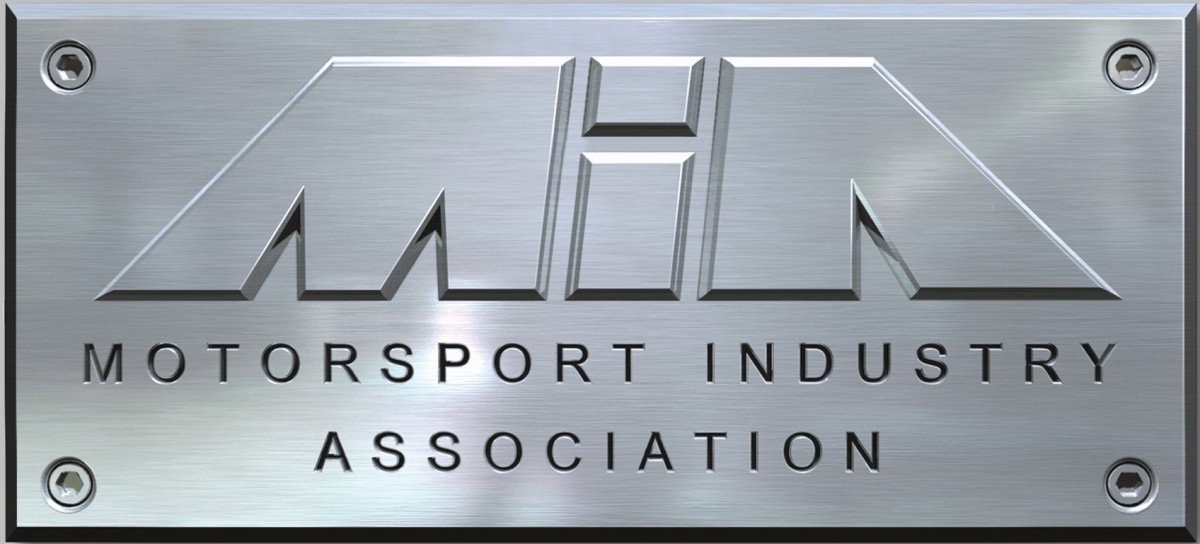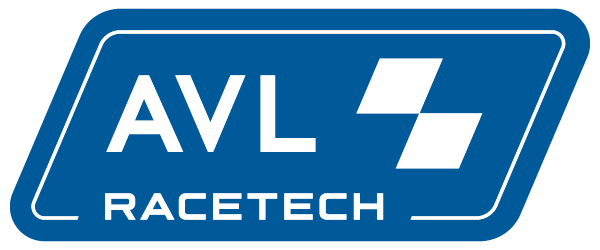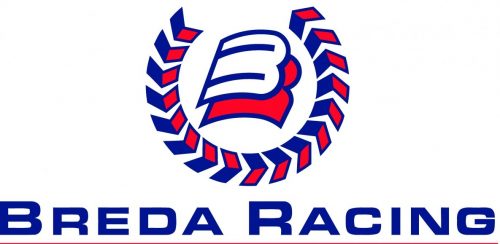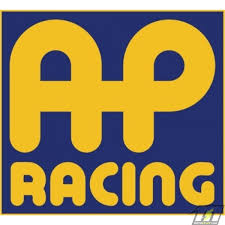Willem Toet explains…the 2019 F1 aerodynamic dilemma
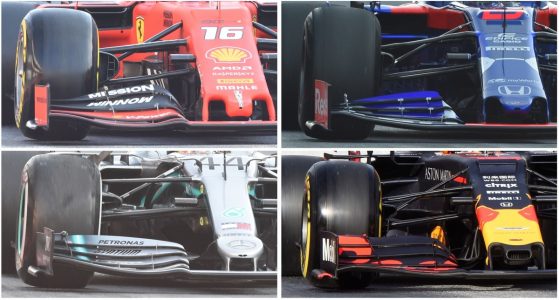
So, the F1 season is underway. Most of the main protagonists are still there but there have certainly been a few surprises. I have been inspired to write this, perhaps a little earlier than I had originally envisaged, because I have been reading some truth and rather a lot of invented fiction about these 2019 cars.
Together, the rule makers (the FIA) and Formula One Management (FOM) are collaborating on rules for the longer term. I fully expect these to be a significant step in the direction of making overtaking easier, hopefully without the need for a false overtaking aid (the DRS). Aerodynamic experts, most of us that is, have long believed that good aerodynamic downforce combined with the ability to race is possible. The reality of F1 in the last 20 years appears to be proving this to be untrue. I believe however!
Given the challenges faced particularly since the introduction of the 2017 rules, the 2019 rules were devised in the interim to try to halt the obvious damage to the ability of the cars to overtake. For 2017/18 changes were made which we knew would make overtaking more challenging.
So how do we know? In the lead up to what became the 2009 regulations (delayed due to insufficient time from the original plan of 2008) specific research was done into the aerodynamics of following cars. This research was paid for by the now defunct Formula One Teams Association (FOTA), in other words it was paid for by the teams. Several items made overtaking harder. These included low wide rear wings and powerful bargeboards. The 2017 rules put these items back onto the cars.
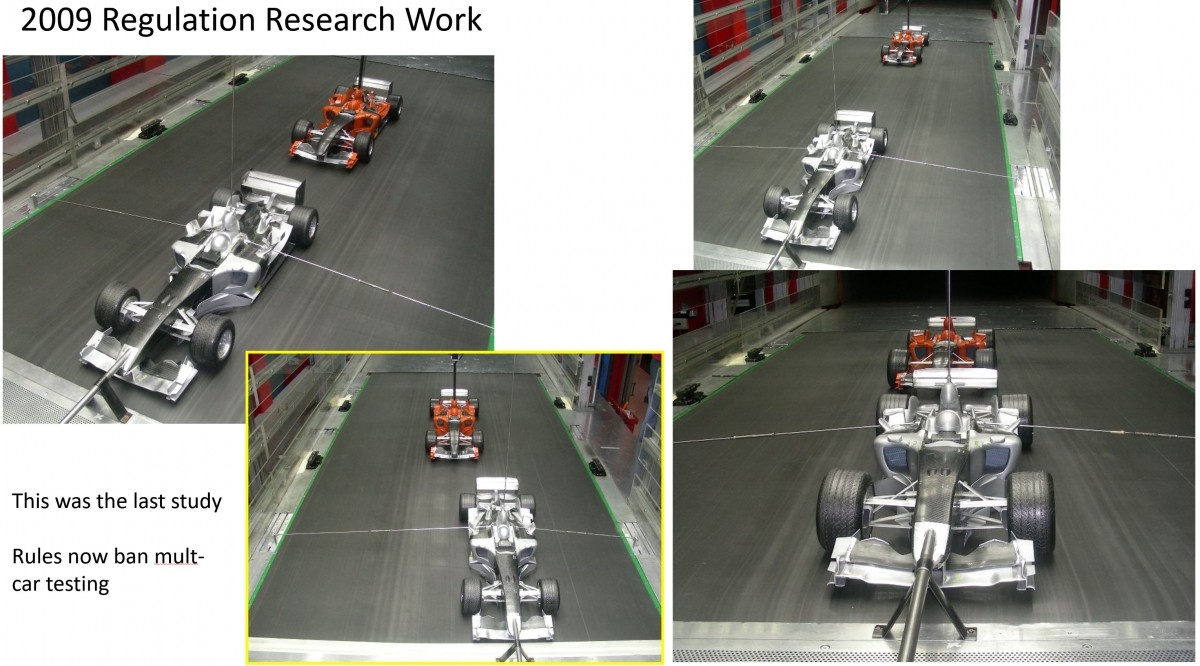
Two small-scale models were tested in the wind tunnel (Fondech) where each model was modified identically, and the forces measured with and without a second model in front of the primary model (that is the one behind). I was lucky enough to be the key player (Head of Aerodynamics) in the discussions on this research on behalf of the BMW Sauber team. Changes that were made for 2017 allowed freedoms and made changes that, from the research done 10 years earlier, were clearly going to make it more difficult to follow closely. We ignored the lessons of history and paid the price with the additional challenges that drivers faced when getting close to the car in front.
For 2019 the fact that teams play a pivotal role in the creation of the regulations has led to a set of regulations that were always going to struggle to achieve their objectives of improving overtaking. A positive from these rules is a more powerful drag reduction system (DRS). This will certainly help. A negative is that the front wing regulations box has been enlarged so much that teams have freedom to use only part of the box to generate their downforce. Consequently, teams have returned to the game of punching the front wheel wake far outside the periphery of the car in order to generate more downforce. As with every new regulation change, the theoretical performance of the cars has evolved quickly (in CFD and in the wind tunnel). So the intent of the rules has effectively been circumvented.
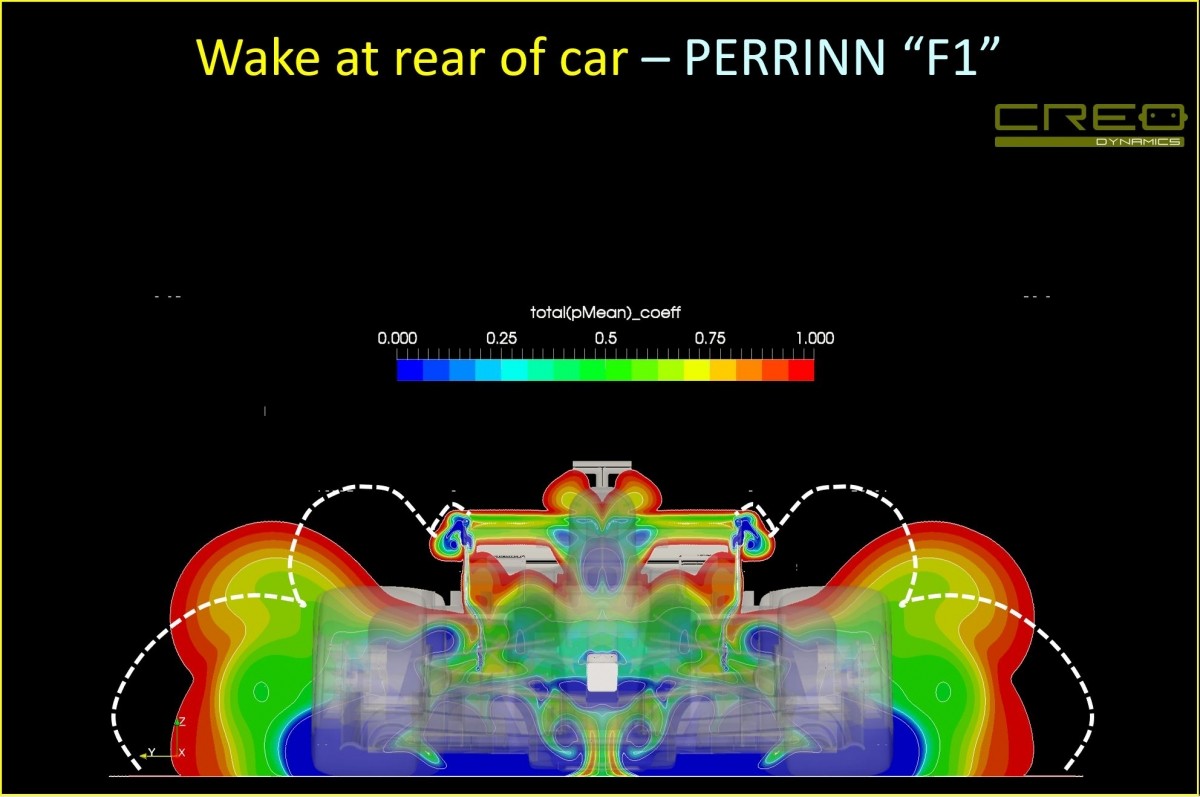
Thanks to Nicolas Perrin for creating the car geometry and to Creo Dynamics for the simulation. This diagram shows the wake just at the back of the “Perrinn” 2017 “F1” model. The white dashed lines are roughly where the equivalent wake of a more developed 2017 car is likely to have been.
Nick Perrinn has released this geometry into the public domain – a service that makes it possible for non-experts to dig into the aerodynamics of recent F1 cars. I would like to show you the wake around a real F1 car and, if I did, it would have a wider low-down wake outside the wheels but also a more powerful upwash coming from the rear wing. The upwash will tend to suck the majority of the wake of any car up into the air and much of it will flow above the following car. Unfortunately though, the front wheel/tyre wake is punched outboard so aggressively with all of these cars that it stays low and has a detrimental impact on following cars.
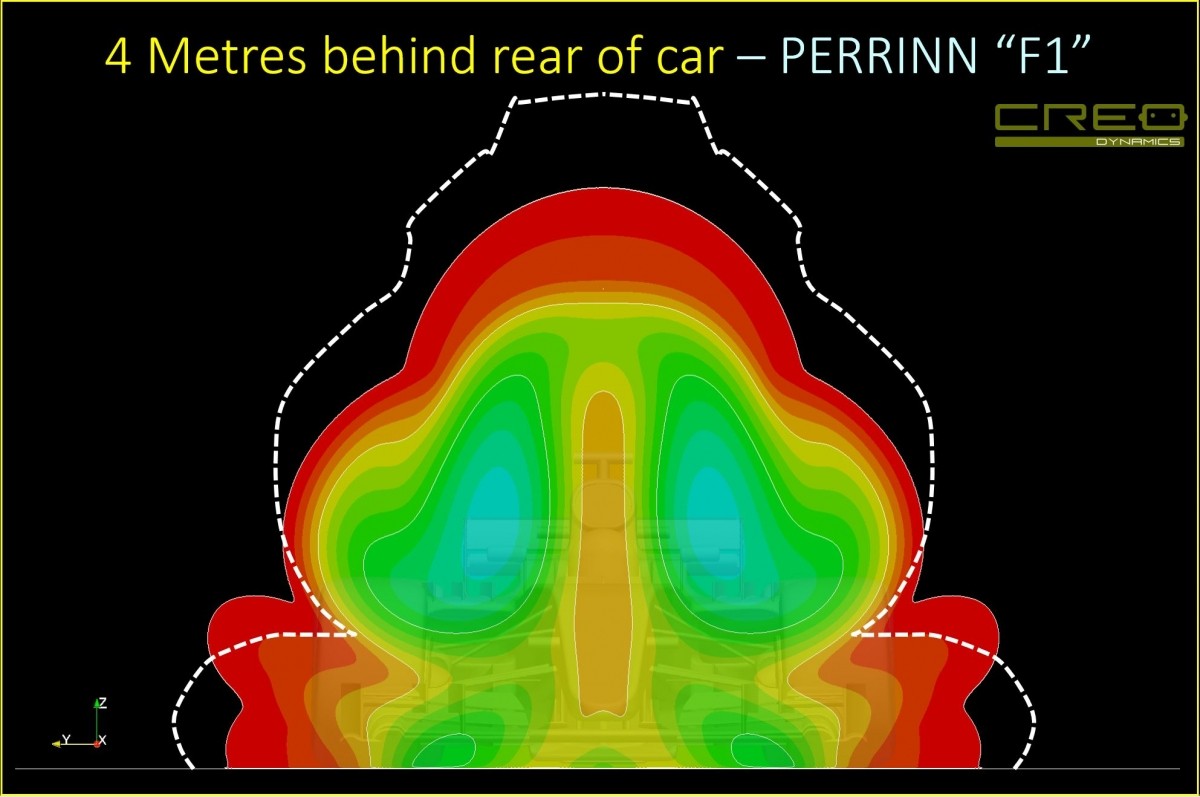
4 metres behind the car and a big part of the wake is going higher than the car, but regrettably a lot of the wake stays wide. The car shape can be seen ghosted into the picture. The wake of a real 2017 car would look like the dashed white lines. The wake of a 2018 car would be wider but also stretched taller. Showing the wake of a 2019 car is not something I’m prepared to do.
When the 2019 regulations were being discussed, the teams, as usual, tried their best to argue for changes they believed might be beneficial to themselves. Experience has taught me that the short-term and selfish needs of each team dictate the way they explain motivation for or against the regulations. Engineering truth and health of the sport overall is virtually never successful when the teams have to vote. The exception, I must state, is matters relating to safety. So, when the outwashing end plates and turning vanes were eliminated by a push from the rule makers, the teams requested more volume to recover the lost downforce. Every aerodynamicist in F1 will have known that the lost elements did not create (significant) front downforce; they managed the tyre wake creating a large vortex that brought high energy flow back into the area of the barge boards which in turn allowed more downforce to be generated further back on the car. The new regulatory box for the front wing is significantly wider and taller than the old one. This has allowed teams to return to the game of creating outwash. My belief is that the outwash on the 2019 cars is not smaller averaged over the grid than it was in 2018. For certain teams, the 2019 cars have a larger outwash than those of 2018, which then allows the cars to produce more downforce.
The cars are heavier this year due to the regulations, but they are faster.
Now to the large range of designs used by the different teams on front wing design. One cannot cover every aspect and, as an expert, I know that it is dangerous to predict which design will ultimately prove to be the best for individual car performance. Let us keep things simple. Expansion and front downforce generation using the inboard parts of the front wing will have the following consequences. Less air will travel past the front wing to the area behind the front wheels where teams locate their variously-named barge boards. A powerful Y250 vortex remains and still provides energy to the barge board area. With this inboard “blockage”, more air will flow outboard towards the front wheel where even the small angle now permitted on the front wing end plate (FWEP) will directly create significant outwash. Further tricks to create more outwash are on the way; some already being used in Melbourne.
Then consider this. The front wings are now back to being as wide as the overall vehicle. Therefore front wing losses and potential outboard damage to front wings is likely. If most of your front downforce is generated outboard, it is likely you will lose more of that downforce if you damage your FWEP. No matter how the spanwise lift distribution is organised, there will still be a massively powerful series of vortices which add up to the so-called Y250 vortex, which will take flow nominally aiming to pass around beside the driver and rotate some of that flow down into the area that can be used by the barge boards.
For the teams generating the majority of their front wing downforce outboard, a little less direct outwash can be created at the end plate, but more air is directly available to the barge board area so that the front wheel wake can be controlled from behind the wheel more and from in front of it a little less. Both conceptual designs can be evolved to generate more downforce with the front of the car as total downforce levels increase due to the evolution of the designs. There is still a lot of front wing “box” available.
So, my question to all of you budding aerodynamic experts is: do the teams all investigate the opposite solution to the one they currently run? If they do, what are the consequences?
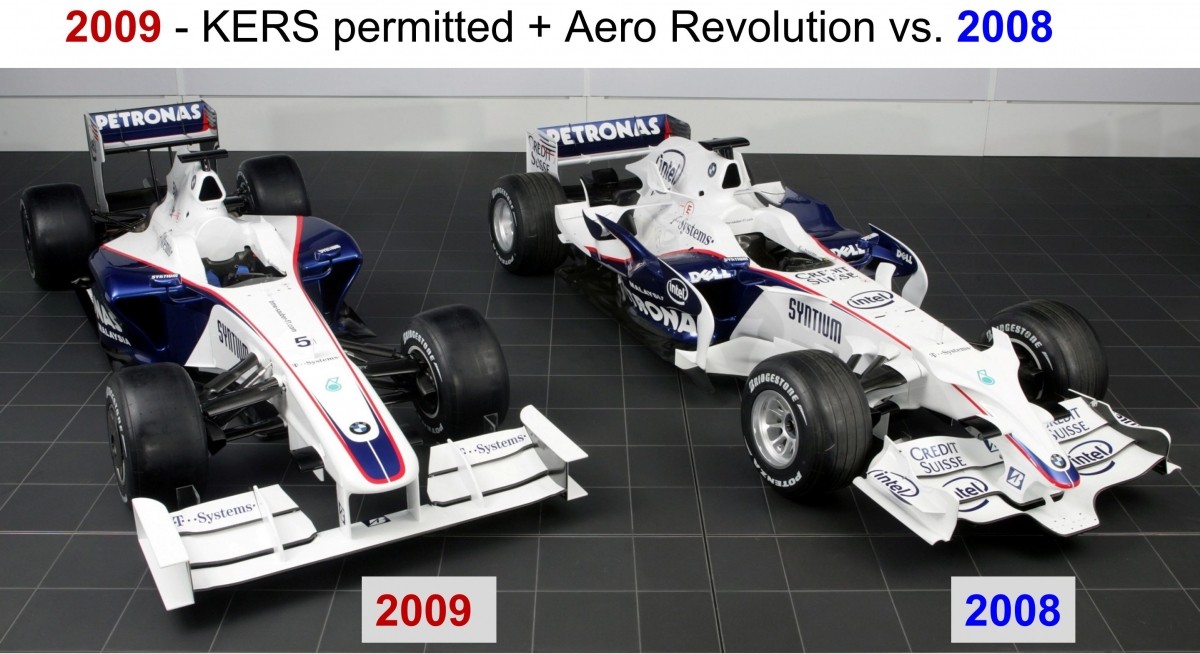
The 2009 and 2008 BMW Sauber cars as at Rollout for 2009. Rather different looking cars for rather different aerodynamic regulations.
In 2009, F1 allowed energy recovery systems (KERS) to be used for the first time. These systems allowed any team running them to gain a theoretical 0.25 seconds/lap advantage and to have a strategic (potential overtaking) advantage by using up the energy and deploying it all in one overtaking manoeuvre rather than spreading its use out over a single lap. I argued vociferously not to have the KERS on the BMW Sauber. The strength of my conviction, and quite possibly the way that I argued, ultimately lost me my job.

Every team that decided to fit an ERS went backwards in 2009. So why?
ERS added a huge research load on many departments including the aerodynamics department of the teams choosing to run the system. This, combined with the dramatic rule changes on the aerodynamics themselves in 2009, was why I wanted to give up that “advantage”. There was more to gain having a conventional car and working on the aerodynamics.
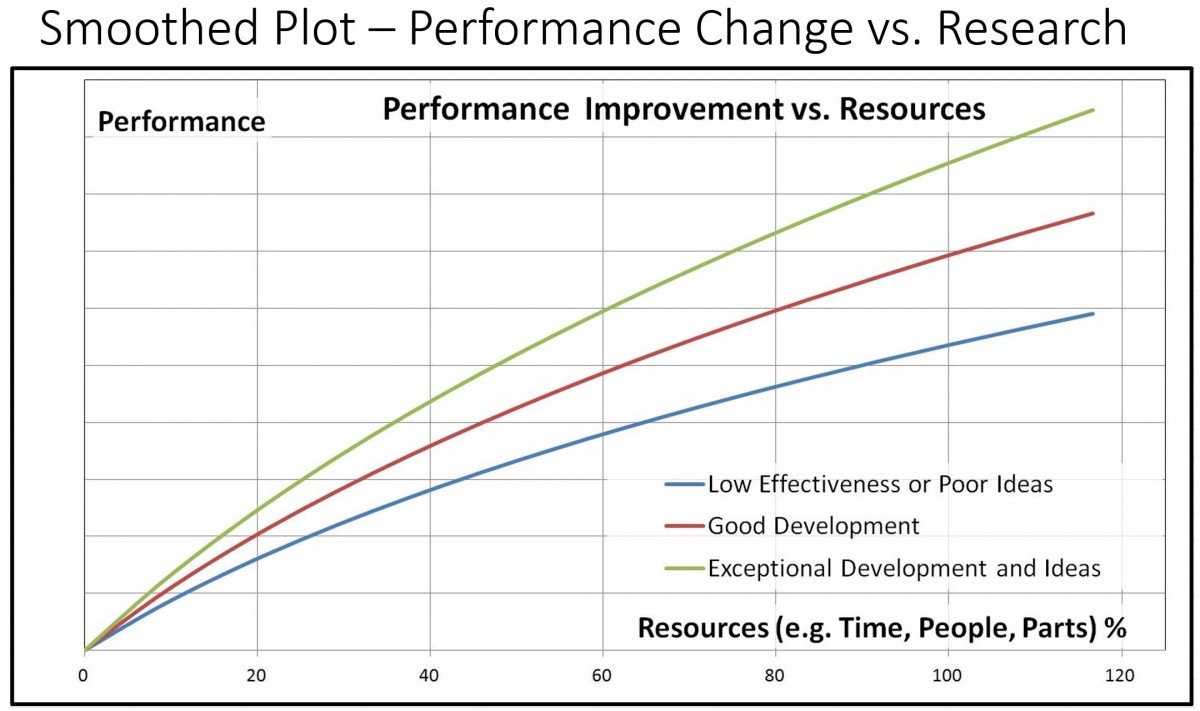
As a resource planner your main role is to deploy resources where they are most useful. You expect a reasonable development curve that will look like one of these curves once it is smoothed out.
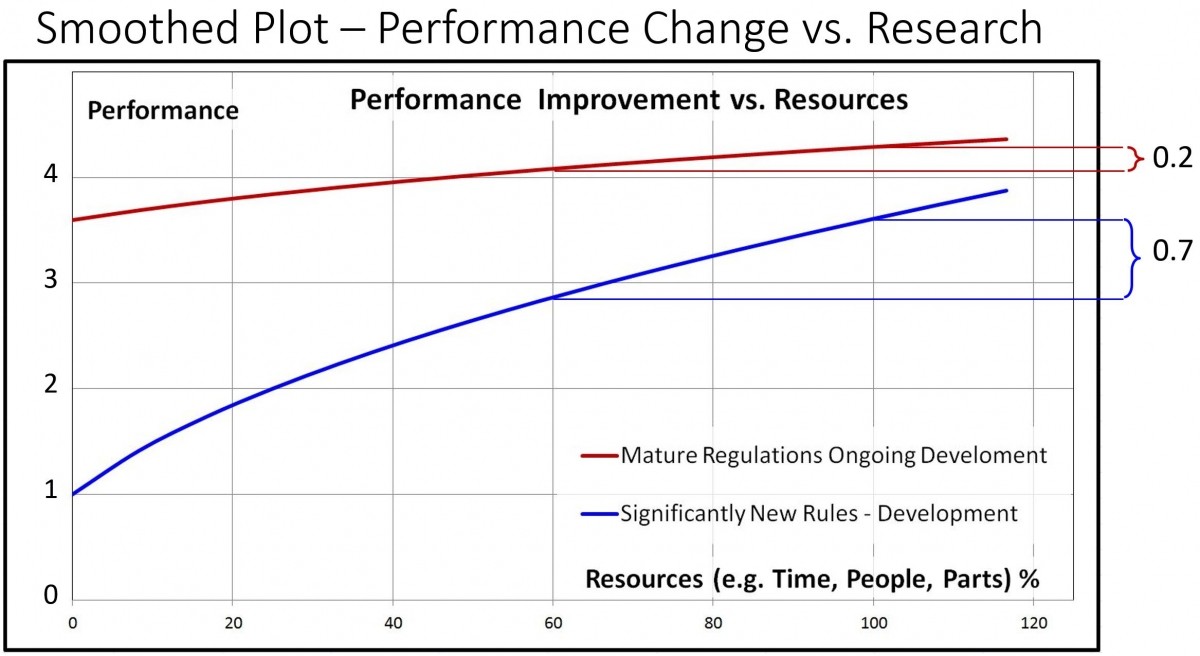
With the changes to the aerodynamic regulations for 2009 this is what I explained would be the result with KERS. Aero research cut to about 60% would mean a loss of 0.7 seconds compared to deploying the whole department’s energy into rules optimisation rather than use 40% of the department on KERS-related work. The truth was that gains made by all teams in the run up to 2009 were larger than expected. Thus the gain for adding research capability (i.e. using the whole department) was also bigger than I had predicted.
I then made a really large mistake. My people, knowing very well that non-KERS was the way to go, begged and pushed me to let them do some research into a non-KERS package. Eventually I relented. We made gains but the fundamental unchangable design philosophy of the car could not be changed and the gains were not big enough. This then, was a waste of time and took away from that final performance of the car. Looking back I kick myself for this mistake.
In 2012 a few early adapters discovered that you could use the Coanda effect to circumvent a new regulation which pushed the exhaust gas uphill and away from the floor of the cars. We discovered early that aerodynamic evolution created a diverging path for car shape depending upon the use or not of a Coanda exhaust system.
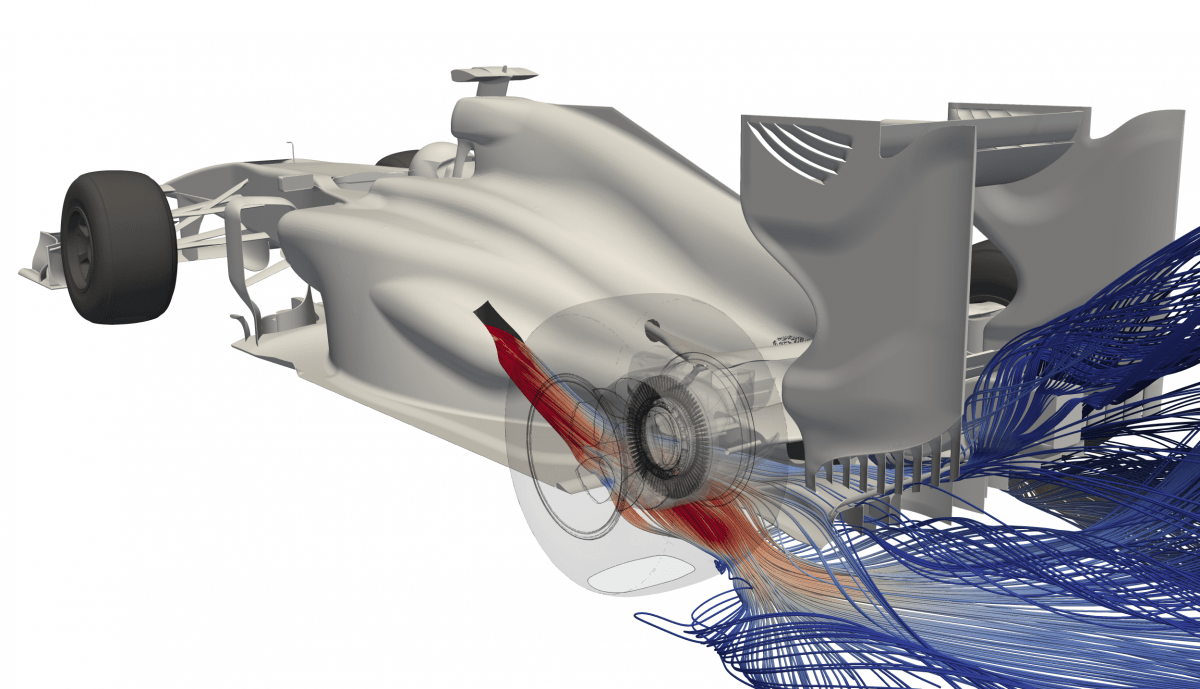
I polled my department heads and influencers about the best direction. Everyone bar one said Coanda exhaust would be fastest. Most, however, wanted to research both, just in case. It was clear that the gains from using the exhaust for performance were so large that even drivability disadvantages would be overcome. The step in performance available, especially coming out of low and medium speed corners was huge. So, remembering the lessons from the past, I pushed both my people and my bosses in the direction of making one choice. It was another fight, a really big fight, but I’m not afraid of a fight.
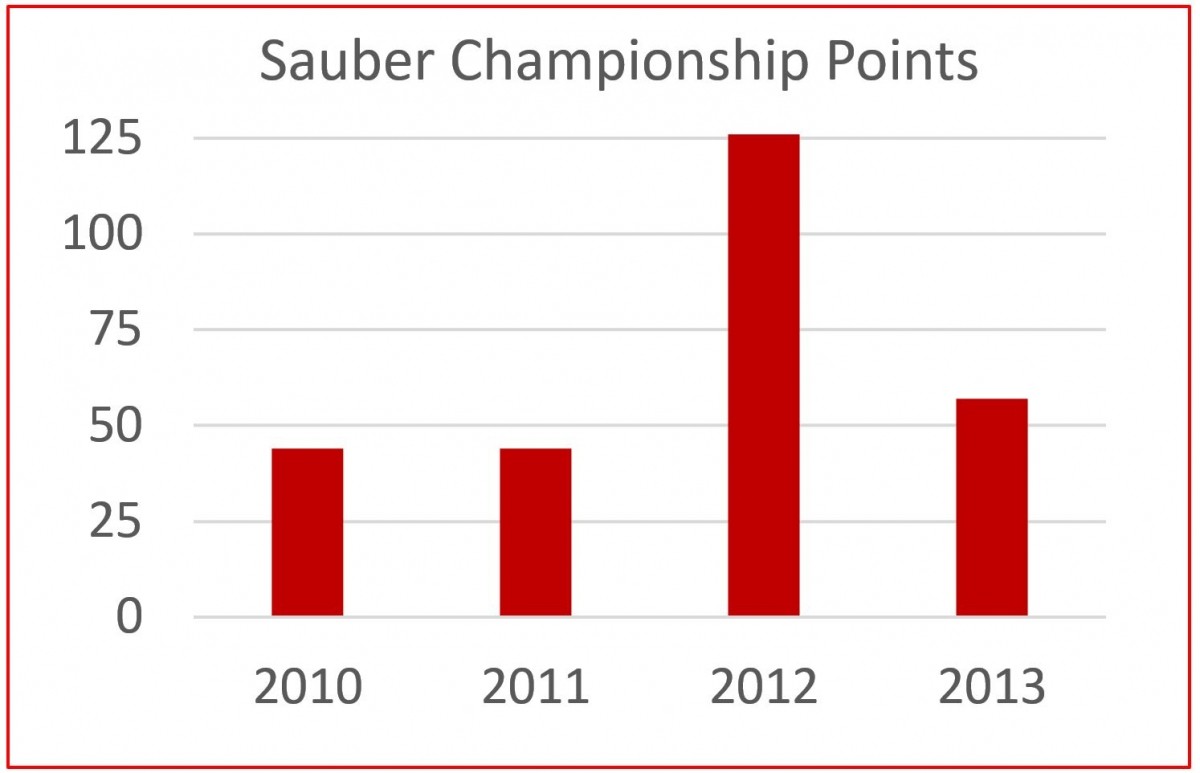
For 2019, I would suggest that, for most teams, staying with their present car concept is likely to give them the best 2019 result.
If you were the boss of a F1 team and you had to decide whether to change direction and investigate a new concept or not, you have to consider the consequences of that choice. To give the alternative concept a fighting chance, you have to apply a significant proportion of your always limited resources to studying that concept. Remember that changing to the new concept may require a new nose design. That means a new crash test which brings its own risk.
Redeploying resources necessarily removes resources from your previous concept and hence reduces your rate of development on your original concept. Consequently, if the new concept is wrong, you have crippled the development rate on the best concept. If the new concept is the best one, you are at least six months behind everybody else who is developing that concept. Result: you are going to have a bad season. The chassis is too hard to change and may already cause a compromise further crippling a potential change of direction. One has to be both arrogant and brave to change – it can work but usually does not.
After the tests in Barcelona, learned opinion suggested that, for whatever reasons, Ferrari had got it right. Post-Melbourne, it is clear that Mercedes had actually got the best package/setup for that event. Over the next races we get a more balanced picture of where the cars and drivers really stand.
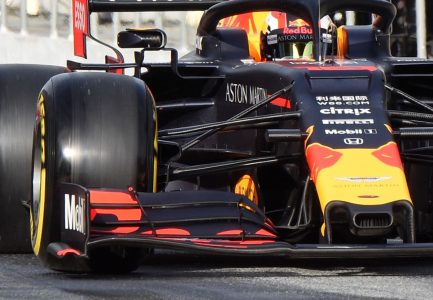
But, if you want to know which concept is best, perhaps our friends at Red Bull (not the team but the sponsor) are in the best position to ferret around and find the answer. They sponsor a car with each concept.
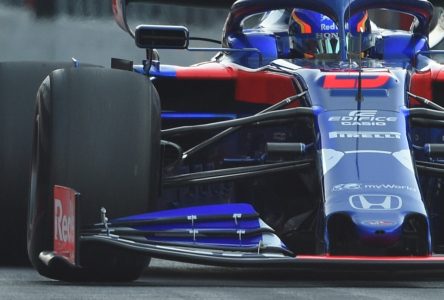
Of course, exchanging data of this sort would be wrong. On the other hand, as the major sponsor of a team, if I asked to see some numbers, I would expect to see them. One would, of course, never pass number between teams, would one? I will leave that thought with you and close. I doubt I have to remind you that in F1 you explore the grey areas – including those of the darker hue. One day I should write that book!!
I think we are all looking forward to seeing the design war evolve and in particular seeing what is revealed at the Barcelona race. By then the fast movers will have had a chance to take that big gamble!
Willem Toet is a professor and the former Head of Aerodynamics at Benetton, Ferrari and Sauber F1.



